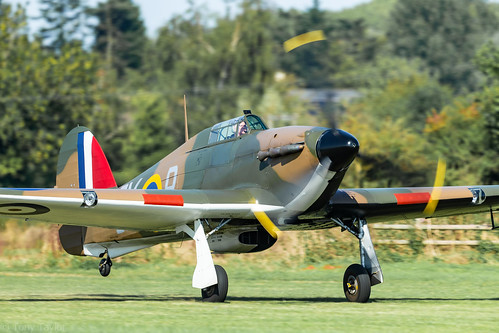The area of the display is maybe 3 or more miles. Sometimes one end of the runway can be in perfect sunlight, the other end cloudy shade.
By choosing a shutter speed that suits the aircraft, you are ensuring that the shot has a good chance of being usable, the aperture and DOF are not the main concerns with this type of photography.
Remember, some of the fast jets exceed 600mph and they are gone in a split second, there is no time to change manual settings or think to yourself, "let's open up and get a nice blurred background with this one".
Motor sport is more forgiving as you have a whole lap before the cars return, so you can easily set up an aperture to get a silky smooth panned background.
But not with fast jets, capturing a decent well exposed shot is more desirable to being artistic.


 Hawker Hurricane
Hawker Hurricane